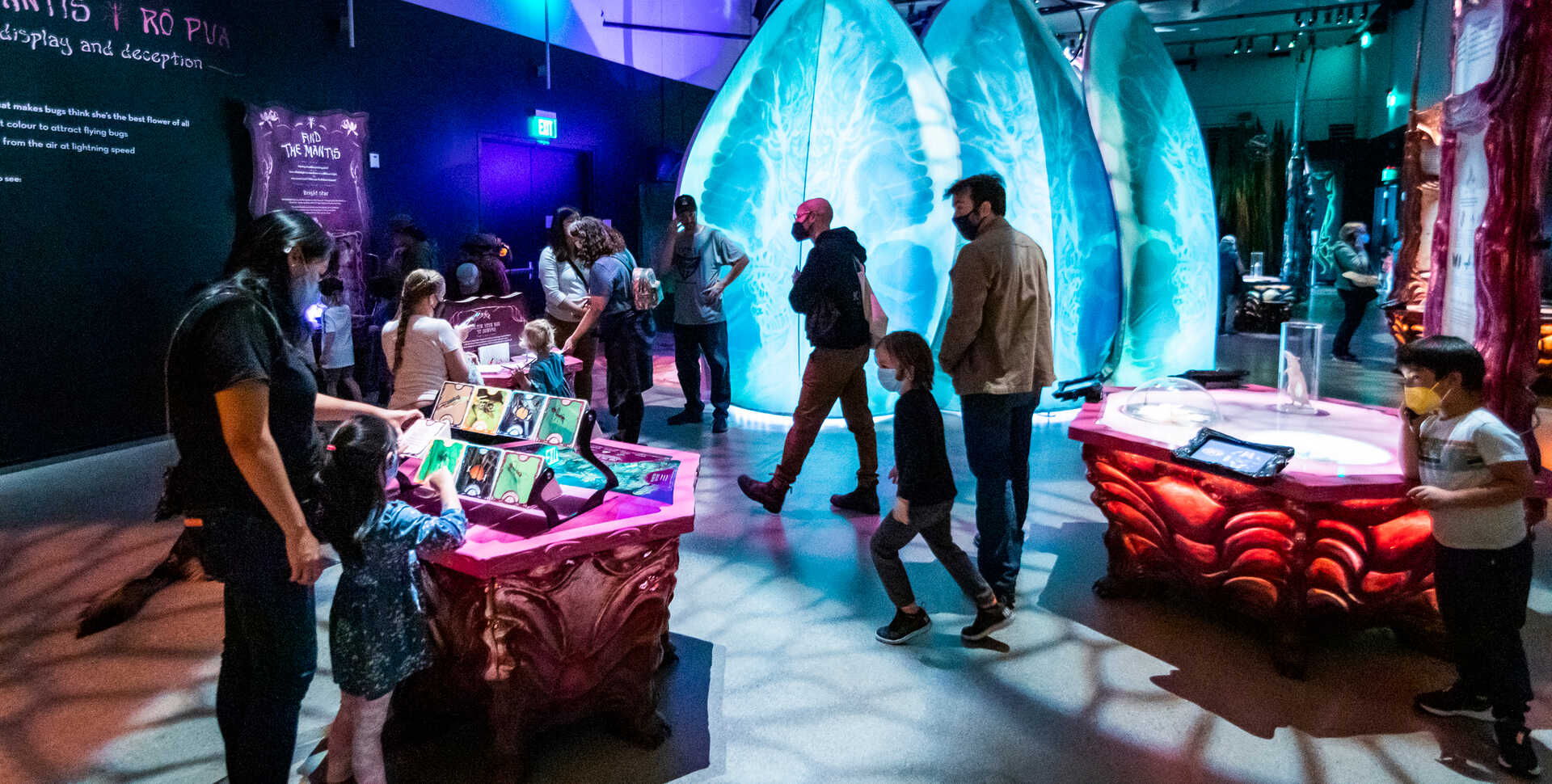Crawl your way into the world of super critters. "Bugs" opens March 9 at the Denver Museum of Nature & Science!
The Denver Museum of Nature & Science welcomes you to the influential world of “Bugs.” This interactive exhibition takes you into the incredible lives of insects, arachnids and myriapods and invites you to think and problem-solve like nature’s true heroes.
Need to save a Japanese honeybee hive from an invading hornet? Join forces and engage with an interactive display to raise the temperature in the beehive and get rid of the intruder. Can you spot the orchid mantis before she spears you for her lunch in the secret garden? Light up your flashlight against a group of flowers to find the camouflaged mantis before it’s too late. Want to fly as fast as the wind? Make your own paper insect and see if the wind tunnel makes it fly up high!

Portrait of jewel beetle.
Bugs make up 90% of all animal species on Earth, yet few of us know how essential and powerful these creatures really are. Discover how their adaptations are inspiring solutions to some of our most complex problems and imagine what’s possible in the future in “Bugs.”
“Bugs are fascinating and beautiful, and so is this exhibit,” said Denver Museum of Nature & Science Senior Curator of Entomology Frank Krell. “It’s a feast for our senses and will give visitors new experiences and insights into the unseen world of small critters.”

Guests enjoy exhibition.

Did you know?
- The domesticated silkworm—which is primarily responsible for the silk production that is used in fashion and more—is entirely dependent on humans and has been bred for thousands of years.
- There is a two-inch long species of dragonfly that has the longest migration of any insect — spanning up to 11,000 miles and four generations.
- Spider silk is so tough, it is being explored as a possible material for armor.
- Atlas moths never eat. They only use the energy stored during the caterpillar stage throughout their short adult lives.
- The iridescent colors on the Blue Morpho butterfly—known for its bright blue wings—are not created by pigments, but instead by the way light interacts with tiny structures on the Morpho's wing scales.
- Biomimicry is when human innovations draw from nature’s design-such as banknote counterfeit prevention technology that is drawn from butterfly wing structure.
- Female orchid mantises have legs that resemble flower petals to attract prey.

Sensory advisory: This exhibition is a high-sensory environment containing significant lighting effects (including a strobe light located in the dragonfly chamber), sounds and music, and interactive media screens. You could expect hyperactivity among children.
“Bugs” is created by Te Papa Tongarewa Museum of New Zealand and Weta Workshop (the creative studio behind the Lord of the Rings films’ fantastical sets).